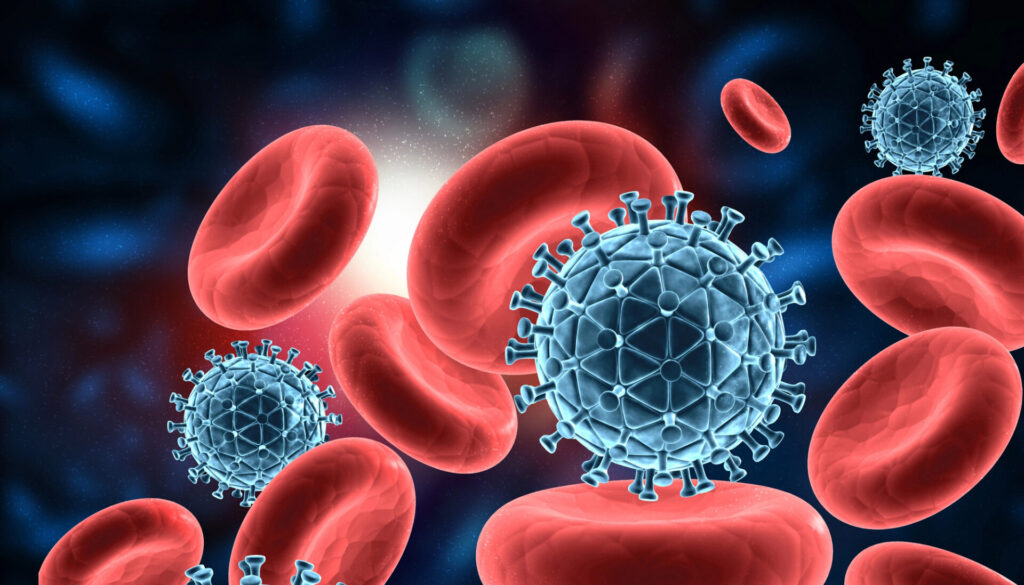As diabetes and metabolic disease rates continue to rise, the popularity of GLP-1 receptor agonists is skyrocketing: more than eight percent of Americans are currently using GLP-1s and nearly 35 percent are expressing interest in the drugs. They may work, but they’re not without risks. Gastrointestinal disturbances affect as many as 85 percent of users, and GLP-1s have been associated with other adverse events including pancreatitis, kidney and gallbladder disorders. Meanwhile, researchers caution that long-term effects are not well-studied.1, 2, 3, 4
A comprehensive, personalized protocol with sustainable strategies rooted in science can help your patients control blood sugar and enhance metabolic resilience. Decades of data support the efficacy and safety of natural interventions—including targeted nutrition, lifestyle modifications and evidence-based supplements—for improving blood sugar regulation, protecting metabolic health and reducing the risk of diabetes. Here’s what the science says.5, 6, 7, 8
Diet and nutrition: meal composition, eating patterns and nutrients.
Dietary modifications are known to be effective for blood sugar management and metabolic health, but interventions are complex. Research shows not only the makeup of meals, but also the timing, frequency and even the order in which components are consumed are important, highlighting the need for a personalized plan. Elements to consider:
- Meal composition. Carbohydrate intake is a critical and widely accepted factor in blood sugar regulation, and numerous studies demonstrate the positive influence of reducing processed, refined carbs and emphasizing low-glycemic foods. Diets focusing on lean protein, non-starchy vegetables, healthy fats and fiber have been shown to lower glycemic variability, enhance insulin sensitivity and lessen the risk of diabetes. Soluble fiber in particular improves blood sugar control as well as lipid profiles and other markers of metabolic health. Foods rich in protein and monounsaturated fats also stimulate endogenous GLP-1 secretion, and nuts, eggs, egg whites, unsaturated fats and foods that combine protein and calcium being appear to be especially effective. The order in which components of meal are consumed further impacts blood sugar: eating protein or non-starchy vegetables before carbs supports both glucose response and GLP-1 levels.9, 10, 11, 12, 13, 14, 15, 16, 17
- Meal timing. In addition to what patients eat, when they eat is crucial. Glucose tolerance is generally diminished in the evening, and consuming high-calorie dinners, especially later at night, is known to increase fasting glucose and impair insulin sensitivity. Having more calories at breakfast or lunch instead of dinner has been shown to improve fasting glucose, as well as hepatic fat, weight management and other metabolic markers.18, 19, 20, 21, 22, 23
- Meal frequency. While having just two meals a day (breakfast and lunch) is linked with better glucose control, eating more frequently keeps glycemic variability low. As long as total caloric intake is moderate and most calories are consumed earlier in the day, spreading meals and snacks throughout the day optimizes blood sugar levels and heightens insulin sensitivity. Some studies also suggest smaller meals eaten throughout the day may reduce fasting glucose, lower HbA1c readings and lessen the risk of developing diabetes. And research shows skipping breakfast altogether increases the risk for type 2 diabetes.24, 25, 26, 27
- Other factors. Deficiencies in key nutrients including chromium and magnesium are linked with insulin resistance and decreased glucose tolerance, while diets higher in magnesium appear to reduce the incidence of diabetes. Probiotic-rich foods can also lower fasting blood sugar and HbA1c and improve insulin resistance. Some evidence suggests certain foods, like cinnamon, apple cider vinegar and fenugreek, may support blood sugar management and enhance insulin sensitivity. Adequate hydration is critical, and higher water intake is correlated with lower diabetes risk.28, 29, 30, 31, 32, 33, 34
Lifestyle: weight maintenance, exercise, stress and sleep.
Likewise, volumes of research link lifestyle modifications with better glucose control and metabolic health and protection against diabetes. The most essential aspects:
- Weight management. Maintaining ideal weight supports optimal blood sugar levels and lessens the risk of developing diabetes. Even small changes matter: for overweight or obese patients, a 5 percent drop in body weight can enhance glucose control and HbA1c readings. Caloric consumption and exercise are crucial in weight management, as well as blood sugar regulation. Low-calorie diets have been shown to normalize glucose in as little as one week while improving HbA1c and other metabolic markers, and reducing caloric intake is associated with a decreased risk of developing diabetes.35, 36, 37, 38
- Physical movement not only helps weight maintenance but also directly impacts blood sugar levels, with studies linking exercise to lower glucose, increased insulin sensitivity and improvements in various parameters of metabolic health. While general guidelines exist, research shows timing, as well as intensity, duration and sequence of activities, are important considerations—underscoring the need for an individualized protocol. In general, post-meal exercise blunts glucose surges and reduces blood sugar levels but does not appear to benefit fasting glucose or insulin sensitivity. However, longer-duration resistance exercise after eating may improve glucose control and triglycerides compared to similar activities performed before eating. Pre-meal exercise, especially high-intensity interval training, is more effective for blood sugar management, fasting glucose and insulin sensitivity. The order in which activities are executed plays a role, with some studies suggesting resistance exercise followed by aerobic exercise is better for glucose control than aerobic exercise followed by resistance exercise. For patients with low tolerance for exercise, even short bouts of walking or resistance activities performed between prolonged periods of sitting has been shown to improve postprandial glucose and insulin responses, as well as other metabolic markers.39, 40, 41, 42, 43, 44, 45, 46, 47, 48, 49
- Stress and mental health. Hormonal disruptions during acute and chronic stress have a significant influence on metabolic function and glucose regulation, and research suggests the onset of diabetes may be initiated by psychological and physical stress. Inconsistent blood sugar levels are further associated with impaired mood, anxiety and lower quality of life, and some studies demonstrates a relationship between high sugar consumption and common mental disorders. Stress-management strategies like yoga and mindfulness meditation are linked with better blood sugar control, insulin sensitivity and other markers of metabolic health.50, 51, 52, 53, 54, 55
- Inadequate or disturbed sleep impacts glucose levels and insulin sensitivity and boosts cortisol, which plays a pivotal part in stress and blood sugar management. Deviations from established sleep patterns, later bedtimes and poor sleep are associated with exaggerated glycemic responses to breakfast the following morning and impaired glycemic regulation. Even a few nights of sleep deprivation can lead to increased insulin resistance. Deep, uninterrupted sleep has been shown to enhance glucose control and insulin sensitivity. Additionally, restful sleep reduces stress and inflammation, encourages weight maintenance and benefits overall metabolic markers.56, 57, 58, 59, 60, 61
Strategic supplements: evidence-based botanicals and nutrients.
Along with diet and lifestyle, science-backed supplements are key components of a targeted protocol to balance blood sugar, increase insulin sensitivity, improve HbA1c levels and support metabolic health. What the research says:
- Hintonia latiflora (H. latiflora), also called copalchi, has a long history of use in traditional medicine for blood sugar management, diabetes and other conditions, and modern data confirms its positive effect on glucose values and insulin response. The plant is rich in bioactive compounds including 4-phenylcoumarins, cucurbitacins and coutareagenin known to promote glucose control. In research, latifloraextract was linked with significant reductions in fasting blood glucose, better HbA1c levels and enhanced insulin sensitivity. Studies show H. latiflora not only regulates glucose metabolism but also improves liver and lipid values, and its vasodilating activities have a positive influence on blood vessel dysfunction associated with diabetes. Combination formulas that include supportive nutrients like B vitamins, zinc, chromium and vitamins C and E, offer added benefits for blood sugar management and quality of life.62, 63, 64, 65, 66, 67, 68, 69
- Berberine, from Indian barberry (B. aristata), has been used for thousands of years in multiple traditional medical systems to treat a variety of disorders. Current evidence validates its use as a potent hypoglycemic agent with effects on other metabolic markers. It works in part by activating the AMPK pathway, blunting hepatic gluconeogenesis and increasing insulin sensitivity. In several studies, berberine significantly reduced blood sugar levels and lowers HbA1c, with some research suggesting it’s as effective as common oral diabetes medications. Berberine also has powerful antioxidant and anti-inflammatory activities and positive impacts on lipid profiles, and both human and animal studies demonstrate its ability to decrease total cholesterol, triglycerides and LDL. However, the oral bioavailability of berberine is extremely limited—less than 1 percent in some models—and alternative approaches are being explored to enhance its absorption. Gamma cyclodextrin, a naturally occurring oligosaccharide, significantly improves the bioavailability of water-insoluble compounds, and berberine products formulated with gamma cyclodextrin hold promise for superior absorption.70, 71, 72, 73, 74, 75, 76
- Alpha lipoic acid (ALA) is widely recognized for its powerful antioxidant properties, and a growing body of research points to its role in blood sugar management and metabolic health. ALA has been shown to increase glucose uptake in skeletal muscles and adipose tissues, with positive effects on insulin sensitivity and insulin secretion, as well as circulating lipid levels and other metabolic markers. Additionally, ALA may protect nerves from damage—critical for patients with existing diabetes. It’s thought to regenerate nerve fibers, preventing the progression of neuropathy, and in studies, ALA treatment improved symptoms and deficits in patients with diabetic peripheral neuropathy. ALA supplements that include supportive nutrients offer the broadest range of activities for glucose metabolism and nerve function. B vitamins, chromium and zinc have known benefits for insulin metabolism, glucose homeostasis, overall diabetes management and nerve protection, and boswellia is shown to promote peripheral nerve regeneration and reduce neuropathic pain.77, 78, 79, 80, 81, 82, 83, 84, 85
Related:
Berberine and Metabolic Syndrome: A Natural Strategy for Blood Sugar, Cholesterol & Inflammation
References:
- Collins L, Costello RA. Glucagon-Like Peptide-1 Receptor Agonists. [Updated 2024 Feb 29]. In: StatPearls [Internet]. Treasure Island (FL): StatPearls Publishing; 2025 Jan-.
- Watanabe JH et al. Trends in glucagon-like peptide 1 receptor agonist use, 2014 to 2022. J Am Pharm Assoc (2003). 2024 Jan-Feb;64(1):133-138.
- Gorgojo-Martínez JJ et al. Clinical Recommendations to Manage Gastrointestinal Adverse Events in Patients Treated with Glp-1 Receptor Agonists: A Multidisciplinary Expert Consensus. J Clin Med. 2022 Dec 24;12(1):145.
- Ghusn W, Hurtado MD. Glucagon-like Receptor-1 agonists for obesity: Weight loss outcomes, tolerability, side effects, and risks. Obes Pillars. 2024 Aug 31;12:100127.
- Siegel KR et al. Prevalence of major behavioral risk factors for type 2 diabetes. Diabetes Care 2018;41:1032–1039.
- Knowler WC et al. Diabetes Prevention Program Research Group . Reduction in the incidence of type 2 diabetes with lifestyle intervention or metformin. N Engl J Med 2002;346:393–403.
- Chacko E, Signore C. Five Evidence-Based Lifestyle Habits People With Diabetes Can Use. Clin Diabetes. 2020 Jul;38(3):273-284.
- American Diabetes Association 1. Improving care and promoting health in populations: Standards of Medical Care in Diabetes—2020. Diabetes Care 2020;43(Suppl. 1):S7–S13.
- Bodnaruc AM et al. Nutritional modulation of endogenous glucagon-like peptide-1 secretion: a review. Nutr Metab (Lond). 2016 Dec 9;13:92.
- Hira T et al. Improvement of Glucose Tolerance by Food Factors Having Glucagon-Like Peptide-1 Releasing Activity. Int J Mol Sci. 2021 Jun 21;22(12):6623.
- Watkins JD et al. Protein- and Calcium-Mediated GLP-1 Secretion: A Narrative Review. Adv Nutr. 2021 Dec 1;12(6):2540-2552.
- Ewers B et al. Effects of basic carbohydrate counting versus standard outpatient nutritional education (The BCC Study): study protocol for a randomised, parallel open-label, intervention study focusing on HbA1c and glucose variability in patients with type 2 diabetes. BMJ Open. 2019 Nov 21;9(11):e032893.
- Vlachos D et al. Glycemic Index (GI) or Glycemic Load (GL) and Dietary Interventions for Optimizing Postprandial Hyperglycemia in Patients with T2 Diabetes: A Review. Nutrients. 2020 May 27;12(6):1561.
- Shukla AP et al. The impact of food order on postprandial glycaemic excursions in prediabetes. Diabetes Obes Metab 2019;21:377–381.
- Kuwata H et al. Meal sequence and glucose excursion, gastric emptying and incretin secretion in type 2 diabetes: a randomised, controlled crossover, exploratory trial. Diabetologia 2016;59:453–461.
- Shukla AP et al. Food Order Has a Significant Impact on Postprandial Glucose and Insulin Levels. Diabetes Care. 2015 Jul;38(7):e98-9.
- Indarto D et al. Effects of Vegetables Consumption Before Carbohydrates on Blood Glucose and GLP-1 Levels Among Diabetic Patients in Indonesia. Int J Prev Med. 2022 Nov 23;13:144.
- Versteeg RI et al. Meal timing effects on insulin sensitivity and intrahepatic triglycerides during weight loss. Int J Obes 2018;42:156–162.
- Jovanovic A et al. The second-meal phenomenon in type 2 diabetes. Diabetes Care 2009;32:1199–1201.
- Lee SH et al. Potentiation of the early-phase insulin response by a prior meal contributes to the second-meal phenomenon in type 2 diabetes. Am J Physiol Endocrinol Metab 2011;301:E984–E990.
- Hutchison AT et al. Time-restricted feeding improves glucose tolerance in men at risk for type 2 diabetes: a randomized crossover trial. Obesity (Silver Spring) 2019;27:724–732.
- Jakubowicz D et al. High-energy breakfast with low-energy dinner decreases overall daily hyperglycaemia in type 2 diabetic patients: a randomised clinical trial. Diabetologia 2015;58:912–919.
- Madjd A et al. Beneficial effect of high energy intake at lunch rather than dinner on weight loss in healthy obese women in a weight-loss program: a randomized clinical trial. Am J Clin Nutr 2016;104:982–989.
- Kahleova H et al. Eating two larger meals a day (breakfast and lunch) is more effective than six smaller meals in a reduced-energy regimen for patients with type 2 diabetes: a randomised crossover study. Diabetologia 2014;57:1552–1560
- Wang X et al. Meal frequency and incidence of type 2 diabetes: a prospective study. Br J Nutr. 2022 Jul 28;128(2):273-278.
- Li C et al. Longitudinal association between eating frequency and hemoglobin A1c and serum lipids in diabetes in the SEARCH for Diabetes in Youth study. Pediatr Diabetes. 2018 Apr 30:10.1111/pedi.12690.
- Mekary RA et al. Eating patterns and type 2 diabetes risk in men: breakfast omission, eating frequency, and snacking. Am J Clin Nutr 2012;95:1182–1189
- Mehri A. Trace Elements in Human Nutrition (II) – An Update. Int J Prev Med. 2020 Jan 3;11:2.
- Zhang Q et al. Effect of probiotics on glucose metabolism in patients with type 2 diabetes mellitus: A meta-analysis of randomized controlled trials. Medicina (Kaunas). 2016;52(1):28-34.
- Sharifi-Rad J et al. CinnamomumSpecies: Bridging Phytochemistry Knowledge, Pharmacological Properties and Toxicological Safety for Health Benefits. Front Pharmacol. 2021 May 11;12:600139.
- Ousaaid D et al. Beneficial Effects of Apple Vinegar on Hyperglycemia and Hyperlipidemia in Hypercaloric-Fed Rats. J Diabetes Res. 2020 Jul 10;2020:9284987.
- Skalli S et al. An ethnobotanical survey of medicinal plants used for diabetes treatment in Rabat, Morocco. Heliyon. 2019 Mar 27;5(3):e01421.
- Vanhaecke T et al. A Journey through the Early Evidence Linking Hydration to Metabolic Health. Ann Nutr Metab. 2020;76 Suppl 1:4-9.
- Janbozorgi N et al. Water intake and risk of type 2 diabetes: A systematic review and meta-analysis of observational studies. Diabetes Metab Syndr. 2021 Jul-Aug;15(4):102156.
- Lim EL et al. Reversal of type 2 diabetes: normalisation of beta cell function in association with decreased pancreas and liver triacylglycerol. Diabetologia 2011;54:2506–2514
- Mouri MI, Badireddy M. Hyperglycemia. [Updated 2023 Apr 24]. In: StatPearls [Internet]. Treasure Island (FL): StatPearls Publishing; 2025 Jan-.
- Aras M et al. Obesity and Diabetes. Nurs Clin North Am. 2021 Dec;56(4):527-541.
- Yuan X et al. Effect of Intermittent Fasting Diet on Glucose and Lipid Metabolism and Insulin Resistance in Patients with Impaired Glucose and Lipid Metabolism: A Systematic Review and Meta-Analysis. Int J Endocrinol. 2022 Mar 24;2022:6999907.
- Richter EA et al. Interactions between insulin and exercise. Biochem J. 2021 Nov 12;478(21):3827-3846.
- Nygaard H et al. Effects of exercise in the fasted and postprandial state on interstitial glucose in hyperglycemic individuals. J Sports Sci Med 2017;16:254–263.
- Heden TD, Kanaley JA. Syncing exercise with meals and circadian clocks. Exerc Sport Sci Rev 2019;47:22–28.
- Arderius M et al Cardiovascular exercise in fasted state in healthy young adults: analysis of the glycemic profile. Revista Portuguesa de Diabetes 2018;13:14–17
- Shin YH et al. Effects of a pre-exercise meal on plasma growth hormone response and fat oxidation during walking. Prev Nutr Food Sci 2013;18:175–180.
- Aadland E, Høstmark AT. Very light physical activity after a meal blunts the rise in blood glucose and insulin. Open Nutr J 2008;2:94–99.
- Nygaard H et al. Slow postmeal walking reduces postprandial glycemia in middle-aged women. Appl Physiol Nutr Metab 2009;34:1087–1092.
- Borer KT et al. Two bouts of exercise before meals, but not after meals, lower fasting blood glucose. Med Sci Sports Exerc 2009;41:1606–1614.
- Nygaard H et al. Long-term effects of daily postprandial physical activity on blood glucose: a randomized controlled trial. Appl Physiol Nutr Metab 2017;42:430–437.
- Yardley JE et al. Effects of performing resistance exercise before versus after aerobic exercise on glycemia in type 1 diabetes. Diabetes Care 2012;35:669–675.
- Dempsey PC et al. Sitting less and moving more: improved glycaemic control for type 2 diabetes prevention and management. Curr Diab Rep 2016;16:114.
- Ryan KK. Stress and Metabolic Disease. In: Committee on Population; Division of Behavioral and Social Sciences and Education; National Research Council; Weinstein M, Lane MA, editors. Sociality, Hierarchy, Health: Comparative Biodemography: A Collection of Papers. Washington (DC): National Academies Press (US); 2014 Sep 22.
- Sharma K et al. Stress-Induced Diabetes: A Review. Cureus. 2022 Sep 13;14(9):e29142.
- Marcovecchio ML, Chiarelli F. The effects of acute and chronic stress on diabetes control. Sci Signal 5. 2012; 10.
- Knüppel A et al. Sugar intake from sweet food and beverages, common mental disorder and depression: prospective findings from the Whitehall II study. Sci Rep. 2017;7(1):6287. Published 2017 Jul 27.
- Raveendran AV et al. Therapeutic Role of Yoga in Type 2 Diabetes. Endocrinol Metab (Seoul). 2018 Sep;33(3):307-317.
- Shukla R et al. Mindfulness Meditation as Adjunctive Therapy to Improve the Glycemic Care and Quality of Life in Patients with Type 1 Diabetes. Med Sci (Basel). 2021 May 21;9(2):33.
- Reutrakul S, Van Cauter E. Sleep influences on obesity, insulin resistance, and risk of type 2 diabetes. Metabolism. 2018 Jul;84:56-66.
- Nollet M et al. Sleep deprivation and stress: a reciprocal relationship. Interface Focus. 2020 Jun 6;10(3):20190092.
- Tsereteli N et al. Impact of insufficient sleep on dysregulated blood glucose control under standardised meal conditions. Diabetologia. 2022 Feb;65(2):356-365.
- Tiwari R et al. Effects of sleep intervention on glucose control: A narrative review of clinical evidence. Prim Care Diabetes. 2021 Aug;15(4):635-641.
- ElSayed NA et al. Cardiovascular disease and risk management: standards of care in diabetes—2023. Diabetes Care. 2023;46(suppl 1):S158–S190.
- Watson NF et al. Recommended amount of sleep for a healthy adult: a joint consensus statement of the American Academy of Sleep Medicine and Sleep Research Society. Sleep. 2015;38(6):843–844.
- Guerrero-Analco JA et al. Antihyperglycemic effect of constituents from Hintonia standleyana in streptozotocin-induced diabetic rats. Planta Med. 2005 Dec;71(12):1099-105.
- Cristians S et al. Hypoglycemic activity of extracts and compounds from the leaves of Hintonia standleyana and H. latiflora: potential alternatives to the use of the stem bark of these species. J Nat Prod. 2009 Mar 27;72(3):408-13.
- Korec R et al. Effects of the neoflavonoid coutareagenin, one of the antidiabetic active substances of Hintonia latiflora, on streptozotocin-induced diabetes mellitus in rats. Arzneimittelforschung. 2000 Feb;50(2):122-8.
- Korecova M, Hladikova M. Treatment of mild and moderate type-2 diabetes: open prospective trial with Hintonia latiflora extract. Eur J Med Res. 2014 Mar 28;19(1):16.
- Vierling C et al. The vasodilating effect of a Hintonia latiflora extract with antidiabetic action. Phytomedicine. 2014 Oct 15;21(12):1582-6.
- Havel PJ. A scientific review: the role of chromium in insulin resistance. Diabetes Educ. 2004;Suppl:2-14.
- Tamura Y. The role of zinc homeostasis in the prevention of diabetes mellitus and cardiovascular diseases. J Atheroscler Thromb. 2021;28:1109–1122.
- Farooq M. Zinc deficiency is associated with poor glycemic control. J Coll Physicians Surg Pak. 2019;29:253–257.
- Neag MA et al. Berberine: Botanical Occurrence, Traditional Uses, Extraction Methods, and Relevance in Cardiovascular, Metabolic, Hepatic, and Renal Disorders. Front Pharmacol. 2018 Aug 21;9:557.
- Panigrahi A, Mohanty S. Efficacy and safety of HIMABERB® Berberine on glycemic control in patients with prediabetes: double-blind, placebo-controlled, and randomized pilot trial. BMC Endocr Disord. 2023 Sep 7;23(1):190.
- Kim WS et al. Berberine improves lipid dysregulation in obesity by controlling central and peripheral AMPK activity. Am J Physiol Endocrinol Metab. 2009;296:E812–E819.
- Utami AR et al. Berberine and Its Study as an Antidiabetic Compound. Biology (Basel). 2023 Jul 8;12(7):973.
- Guo J et al. The Effect of Berberine on Metabolic Profiles in Type 2 Diabetic Patients: A Systematic Review and Meta-Analysis of Randomized Controlled Trials. Oxid Med Cell Longev. 2021 Dec 15;2021:2074610.
- Yin J et al. Efficacy of berberine in patients with type 2 diabetes mellitus. Metabolism. 2008 May;57(5):712-7.
- Pang B et al. Application of berberine on treating type 2 diabetes mellitus. Int J Endocrinol. 2015;2015:905749.
- Ghelani H et al. Chronic treatment of (R)-α-lipoic acid reduces blood glucose and lipid levels in high-fat diet and low-dose streptozotocin-induced metabolic syndrome and type 2 diabetes in Sprague-Dawley rats. Pharmacol Res Perspect. 2017;5:e00306.
- Eason RC et al. Lipoic acid increases glucose uptake by skeletal muscles of obese-diabetic ob/ob mice. Diabetes Obes Metab. 2002;4:29–35.
- Capece U et al. Alpha-Lipoic Acid and Glucose Metabolism: A Comprehensive Update on Biochemical and Therapeutic Features. Nutrients. 2022 Dec 21;15(1):18.
- Konrad D et al. The antihyperglycemic drug alpha-lipoic acid stimulates glucose uptake via both GLUT4 translocation and GLUT4 activation: Potential role of p38 mitogen-activated protein kinase in GLUT4 activation. Diabetes. 2001;50:1464–1471.
- Yaworsky K et al. Engagement of the insulin-sensitive pathway in the stimulation of glucose transport by alpha-lipoic acid in 3T3-L1 adipocytes. Diabetologia. 2000;43:294–303.
- Karalis DT et al. The Effect of Alpha-Lipoic Acid on Diabetic Peripheral Neuropathy and the Upcoming Depressive Disorders of Type II Diabetics. Cureus. 2021 Jan 18;13(1):e12773.
- Ziegler D et al. Oral treatment with alpha-lipoic acid improves symptomatic diabetic polyneuropathy: the SYDNEY 2 trial. Diabetes Care. 2006 Nov;29(11):2365-70.
- Wang Y et al. Acetyl-11-keto-beta-boswellic acid promotes sciatic nerve repair after injury: molecular mechanism. Neural Regen Res. 2022 Dec;17(12):2778-2784.
- Boccella S et al. Synergistic effects of Boswellia serrata and Acmella oleracea extract combination for treating neuropathic pain in a preclinical model of spared nerve injury. Phytother Res. 2024 Apr;38(4):1731-1734.






